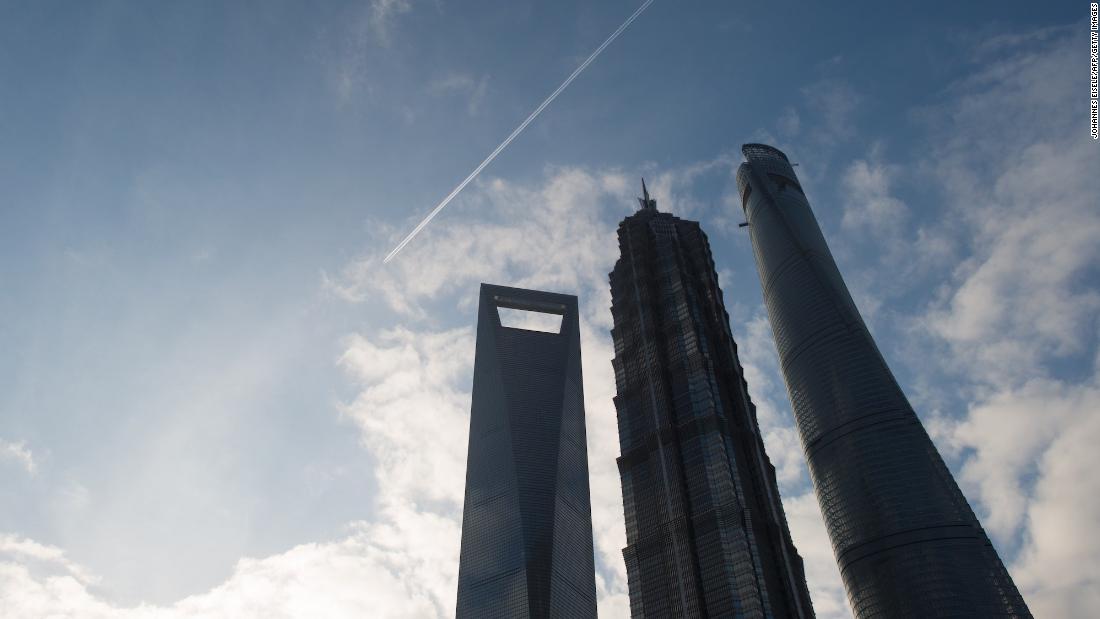[ad_1]

Shenzhen’s Ping An Finance Center is currently the world’s fourth-tallest building. Credit: ANTHONY WALLACE/AFP/Getty Images
But according to Chinese architecture experts, some of the less eye-catching suggestions — such as an appeal for heritage protection, a credit system for designers and the appointment of chief architects — may signal a subtler evolution in the way China’s cities are planned.
“The document is really not just about height,” said Li Shiqiao, a professor of Asian architecture at the University of Virginia, in a phone interview. “It’s about Chinese culture, the urban context, the spirit of the city and the appearance of modernity.”
“This has been in the academic discussion a lot, but somehow not in a government document until now.”
Cut down to size
Of the 10 completed buildings measuring above 500 meters around the world, half are found in mainland China.
Among them are the planet’s second-tallest skyscraper, the twisting Shanghai Tower at 632 meters (2,073 feet) tall, and Shenzhen’s Ping An Finance Center, which is 599 meters (1,965 feet) from base to tip.
Vessel-shaped ‘supertall’ skyscraper transforms Beijing’s skyline
Fei Chen, a senior architecture professor at the UK’s Liverpool University, described the 500-meter limit as “quite arbitrary,” adding that skyscrapers measuring 499 meters are “still very, very tall buildings.” But the new document confirms growing intolerance for buildings that are “out of scale or out of context,” she said.
Chen also pointed to official concern around the “reckless” use of tall buildings, whereby expensive and unprofitable towers are used by real estate firms to brand their developments — or by local governments to put their cities on the map.
“(The guidelines) respond to the identity crisis that we’ve all noticed since the 1980s, when cities started to borrow standards and building types from international contexts,” she said in a phone interview. “And since the 1990s, cities have been promoted as being competitive in the market through the construction of landmarks and large public buildings.”
As such, the new restrictions are as much about economics as design. Above a certain height, the cost of constructing skyscrapers increases exponentially with each additional floor. China’s skylines are now littered with unfinished towers as economic growth slows and developers face a squeeze on credit.

Workers atop the Wuhan Greenland Center, which remains unfinished eight years after construction commenced. Credit: STR/AFP/Getty Images
“If you take Pudong as the paradigm for Chinese urbanization from 2000 to today, then you look at Xiongan — which is not dominated by real estate speculation or iconic buildings — as the new paradigm … then that’s quite an amazing change we’re witnessing.”
A new framework
Yet Li maintains that the 500-meter height restriction is, from an academic standpoint, “probably the least interesting” part of the new government guidelines.
Elsewhere, the circular contains a range of other measures, including the prohibition of “plagiarism, imitation and copycat behavior.” China’s very own Eiffel Tower and a London-inspired Thames Town outside Shanghai are two of the more extreme — and ridiculed — examples of how imitation architecture thrived in the 2000s.

A replica of the Eiffel Tower in Tianducheng, a luxury real estate development in Hangzhou, Zhejiang province. Credit: JOHANNES EISELE/AFP/Getty Images
This official shift, again, may simply reflect the changing design culture in China. But an explicit ban on plagiarism could nonetheless prove useful in a country where the “degree of quality is so diverse,” Chen said.
“There’s already an acknowledgment in the architecture industry that (copying) is not welcome,” she said. “But China is huge, and some cities are doing better than others.
“In east-coast cities, or more developed areas, architects have better design skills, so they produce better buildings. But in inland cities you still see buildings that copy others’ styles or architectural languages, and that doesn’t result in very good design.”
But one of the government’s new suggestions proposes something entirely new in China: chief architects for each city.
Moscow and Barcelona are among cities that already appoint an individual to approve or veto new proposals. Li welcomed the idea as a way to ensure designs fit the overall urban context.
“The hesitation is whether ensuring uniformity means that a city becomes predictable and uninteresting, or whether you actually sustain some degree of creativity,” he added. “But we have a new generation (of Chinese designers) that is great at both maintaining the urban fabric and creating very interesting architecture. The key is instituting a system that guarantees that process.”

The skyline of Chongqing, in southwest China. Credit: Wang Zhao/AFP/Getty Images
How — or even whether — the government’s more exploratory suggestions come to fruition remains to be seen. The new guidelines provide a broad framework for cities, but finer details must be resolved at a local level, said Chen, whose research focuses on urban governance in China.
Characterizing the circular as a series of red lines not to be crossed (more “don’ts” than “dos”), she also suggested that work is still required to positively articulate what constitutes good design.
“There are policies and documents talking about what you shouldn’t do… which is a good thing, but they’ve never said what you should do,” she explained. “Architects and urban designers may benefit from quite specific guidance on what good design is.
“But this needs to be related to the local context, so I wouldn’t expect the national government to produce guidance like this. What works in one context may not work in another.”
[ad_2]
Source link

